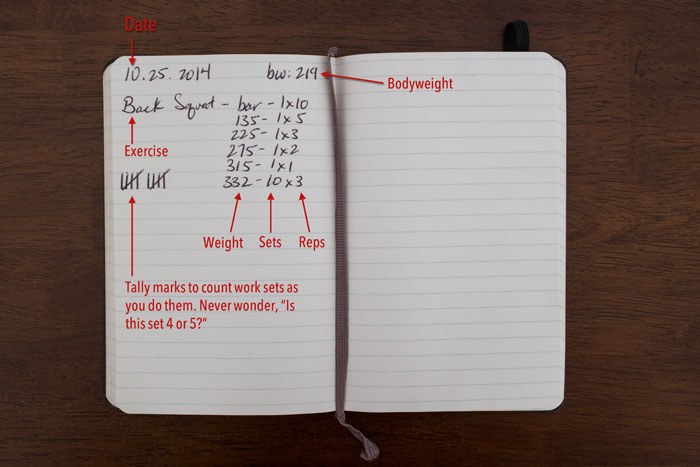
Why “Write Me A Workout” is Useless
July 23, 2023 // Fitness
“We have a brain for one reason, and one reason only, and that’s to produce adaptable and complex movements.”
-Daniel Wolpert
As I write this email, the entire exercise industry (specifically the science of exercise) is going through a major evolution that is [finally] trickling down to the individual workout experience. It’s an exciting time for every person, as we now have an even better understanding of how and why the human body responds and adapts to the inputs applied to it.
The newest research, coupled with decades of mounting evidence, highlights the importance of articular health (individual joint capacity), connective tissue capacity (ligaments, tendons, etc.) and afference (connection between articulations and the brain). As the industry is taking an internal approach, workouts for the general population are now being designed with much more of a biological order of operations, rather than just simply mimicking exercises with what you see and hoping the effects match your intentions.
The internal training approach has a lot of merit, as displays of external movements (such as ranges of motion you can access with your limbs) are now viewed as expression of your internal environment. Your external movements are governed by your internal environment, and thus your internal environment is where the real change(s) occurs.
With this understanding, it is clear that your internal environment is the really the system where you want to spend the majority of your time and effort improving.
Up until recently, I, along with almost the entire community of fitness professionals and exercise enthusiasts, would focus exclusively on the external movements, and would design workout routines along this basis.
As a service, I would be tasked to provide people with a detailed order of exercises for them to train their external movements.
“Can you write me a workout?”
Sure!
I would then cherry-pick a Rolodex of exercises (usually selecting more basic movements that many were familiar with) and design the structure to try and elicit anabolic effects, if the person was to train these generic exercises at a high intensity output.
It is commonplace for a fitness professional to receive requests for custom workout programs, and I myself have written thousands in my almost 20 years in the gym culture.
These programs were, in-theory, effective.
The effects should be yielded, in-theory.
These workout programs were well-designed, in-theory.
But, as I would later learn from subsequent conversations, even my best efforts to design the most intelligent exercise structure would not always yield the effects as intended. The experience was always enjoyed, but the effect is really the task at hand. And so, with the effectiveness lower than I had hoped, I was understandably confused.
How could the same formulas that I mastered and would utilize during my training sessions with clients with high yielding effects not have the same outcomes and overall value when designed for others in the form of a takeaway workout program?
I would also later learn that the issue lie in the my approach: I was selecting exercises without having any observations of the capacities of the persons’ individual body.
Exercises were being prescribed assuming the body practicing these exercises could access these angles of resistance and the person had a clear understanding of what to feel for and how to optimize the movement for their body.
This was, unfortunately, not only wildly unrealistic, but also this approach did not help people learn their own bodies.
Before diving any further into this head-spinning topic, any form of exercise needs to be recognized and celebrated. In a world where less than half of the population participates in any sort of regular physical exercise, I would be remiss to overlook the fact that getting someone excited and comfortable with any form of exercise is already the most important win. The last thing any fitness professional wants to do is to discourage interest in maintaining physical health via exercise participation.
If you enjoy a particular external exercise or movement, this is a good thing, and I, for one, fully encourage you to keep it going, even if the research and evidence would suggest a better approach. Ultimately, the largest battle plaguing this world is the the growing amount of sedentary lifestyle, so at first, any exercise is better for your health and wellness than doing nothing. However, as you’ll see as I get back to the topic at hand, workouts are evolving to become much more intelligent, and that starts with internal training.
I have reworked the idea of a takeaway workout program request to something far more biological-specific relative to the individual, and I have had many successes with the internal training approach.
Gone are the days of “3 sets of 12 reps of Bicep Curls”
Now, all workout program requests start with a proper FRA (Functional Range Assessment) that I run either in-person or remotely. The body of the person tells us where to start, rather than my Rolodex of generic exercises.
In fact, the takeaway workout programs weren’t the only thing to evolve; my entire in-person offering is far different than anything I was teaching just a few years ago.
Internal training is now the basis of my exercise prescriptions, and I have embraced the FRS system to program each and every workout for my clients and even my own fitness.
For now, if you’re following a more traditional exercise program, there’s nothing wrong with this approach. As you see, hear and/or experience internal (mobility) training, layer these elements into your routine, ideally first in the order of operations to yield the most effect.
The evolution of the fitness industry is imminent and overdue, and the changes that will ensue are exciting and encouraging as we now have direct influence over how well we move. Welcome to Internal Training.
Not sure where to start for yourself?
Reply to book an online or in-person session (NYC and Miami only).